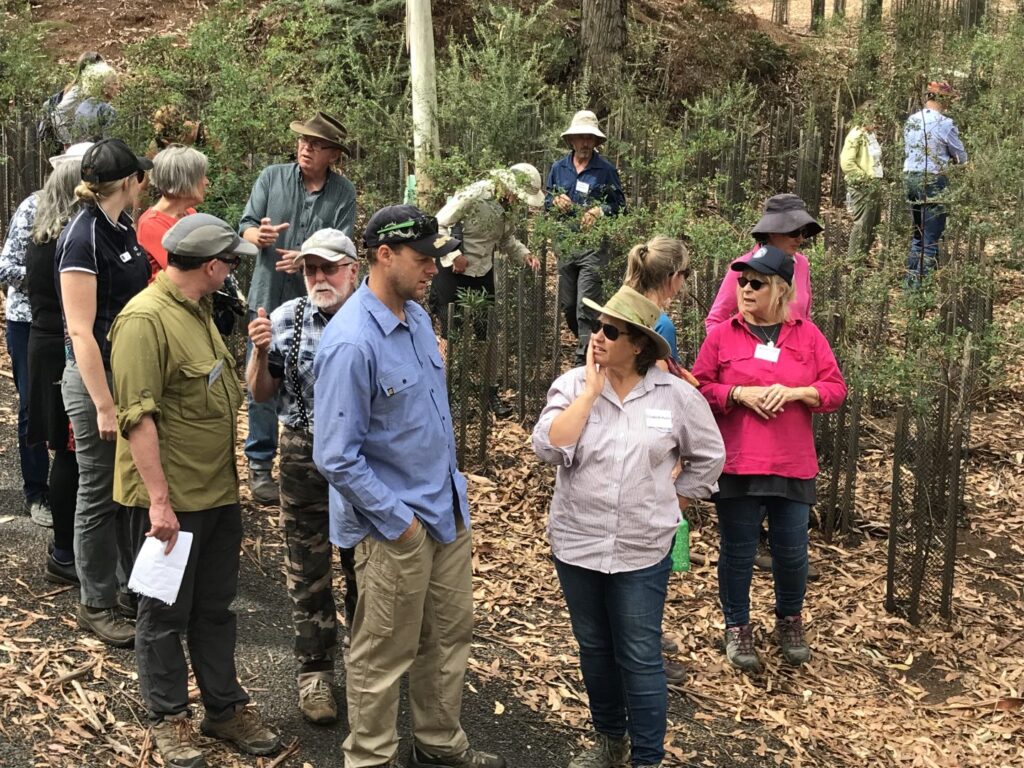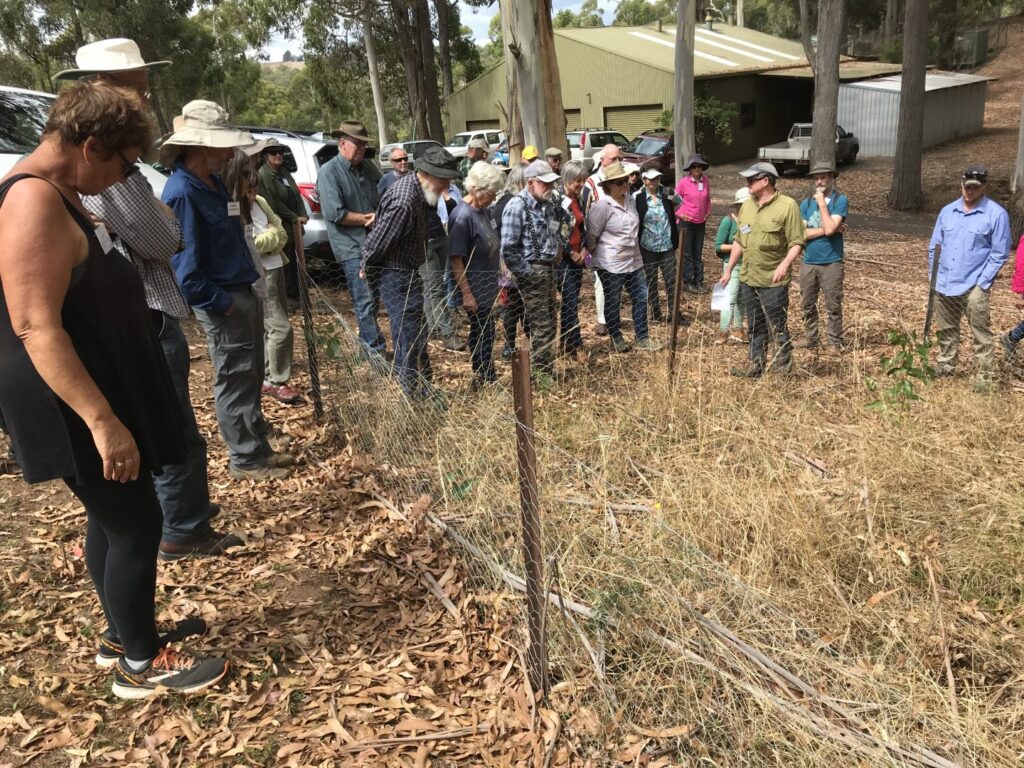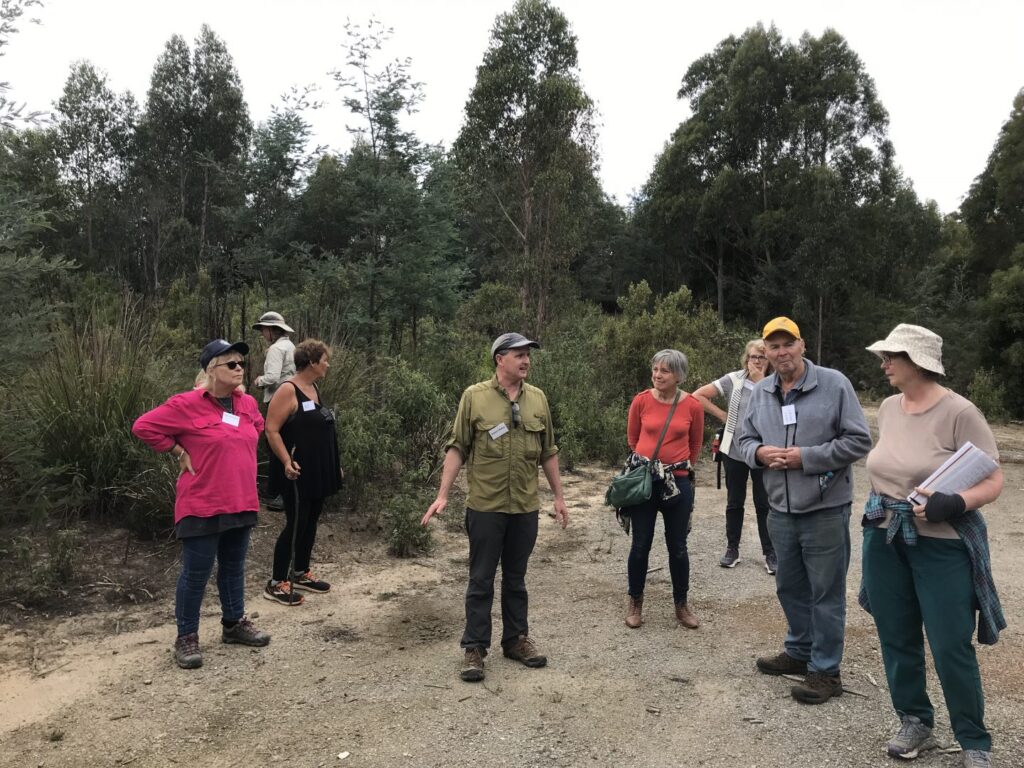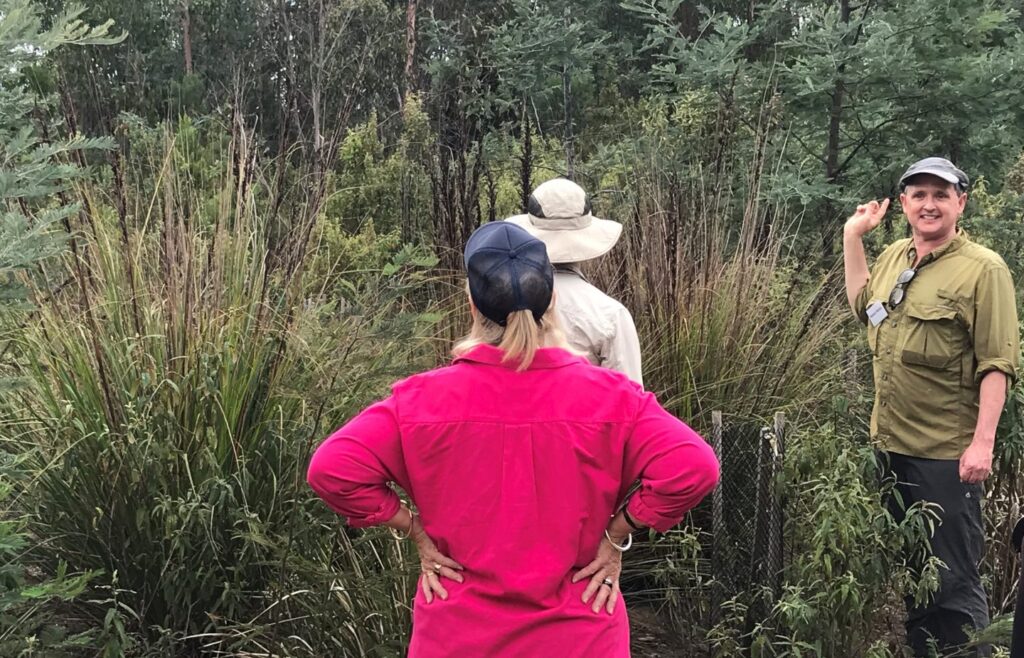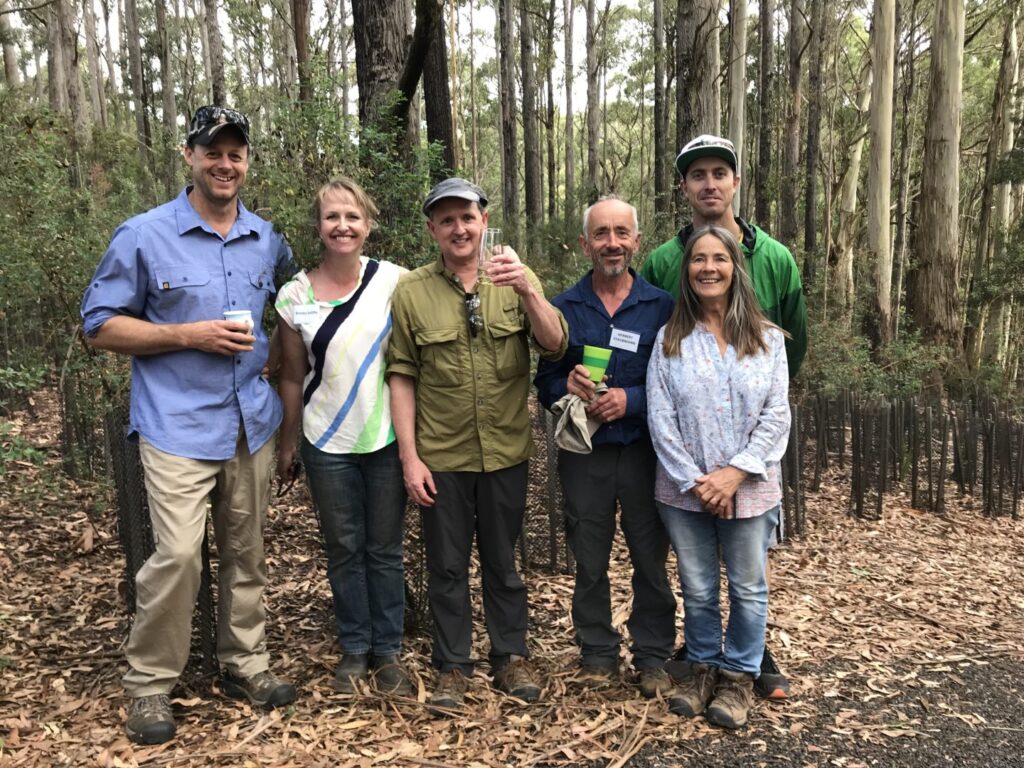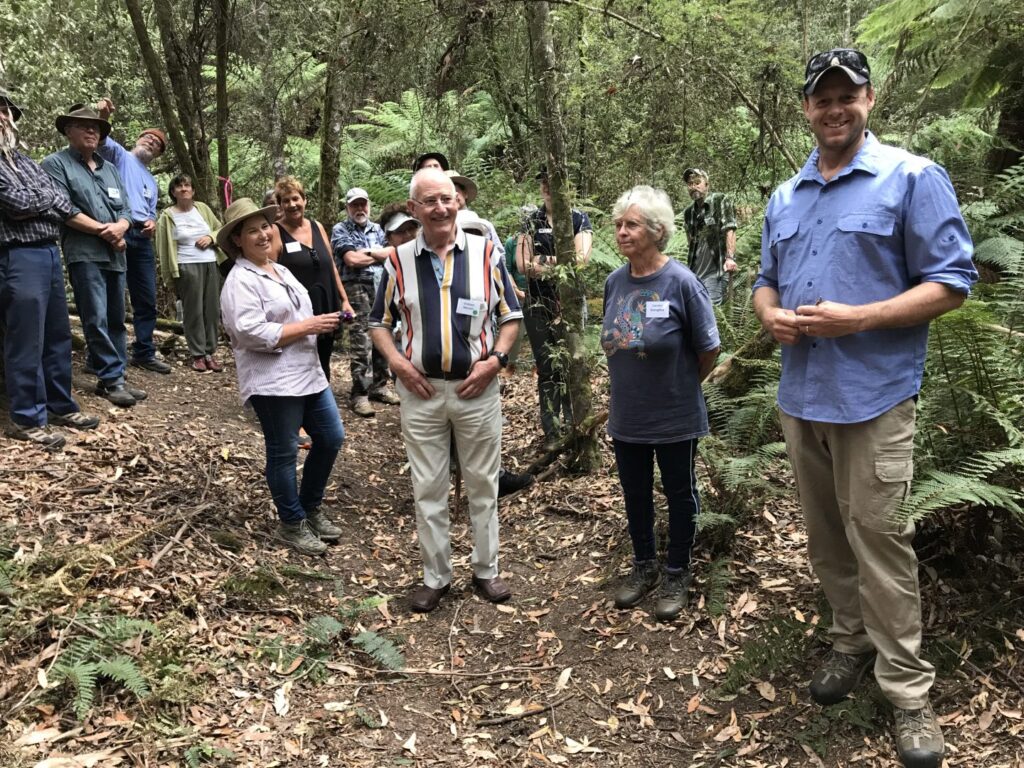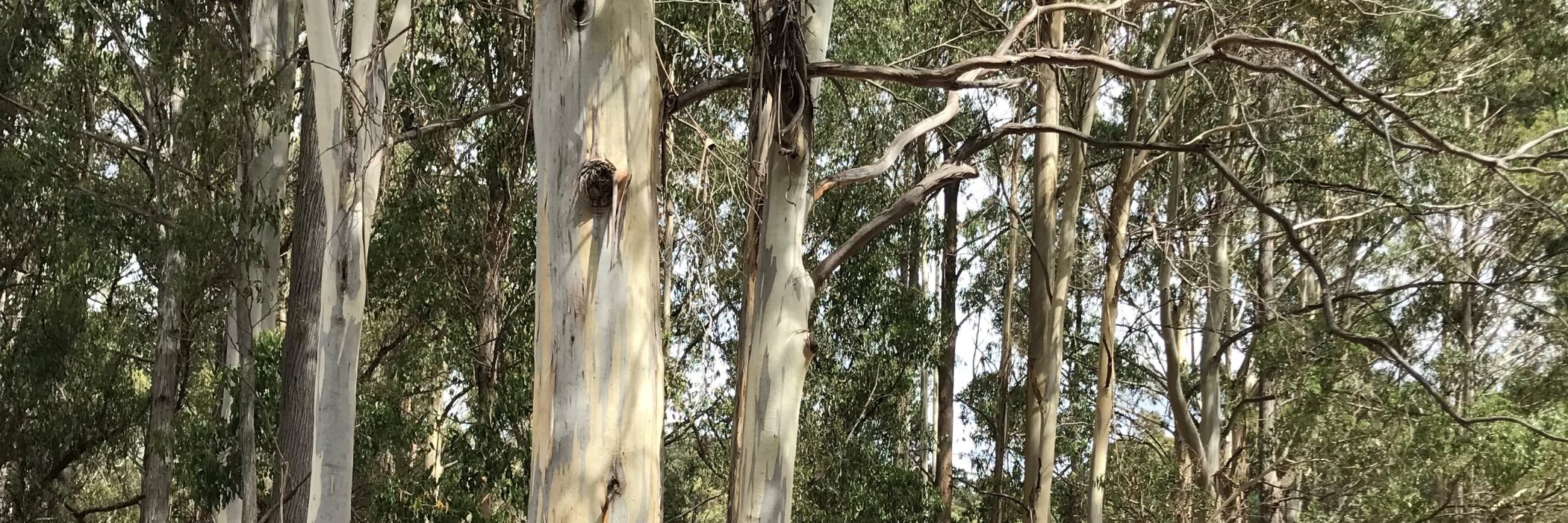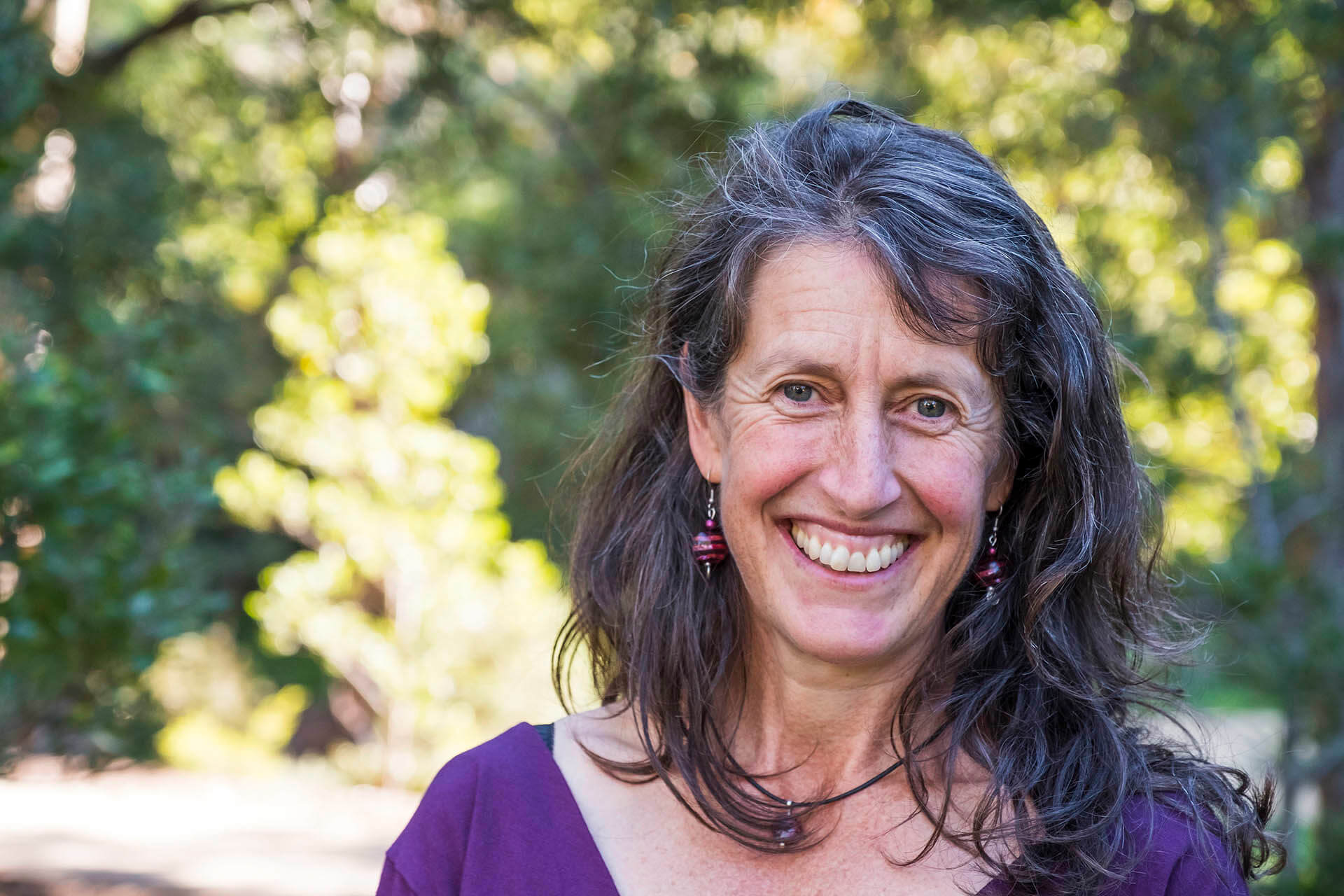An unplanned tree change
When Rob McKay and Brenda Joliffe moved to take up jobs in Tasmania, their friend (a financial planner by profession) said, “Don’t go buying the first property that you lay your eyes on”.
On their way to their new rental property at Forth, in Tasmania’s north west, Rob and Brenda saw a For Sale sign. However it was only after they’d driven up a lovely, fern-lined road to have a closer look that they realised they were actually on the property’s driveway, and by that time, they were hooked. The deal was sealed when a beautiful firetail (the bird which had converted 12 year-old Rob into a lifelong birdwatcher) landed in the cutting grass next to them.
“That was pretty much it”, says Rob, explaining that they then went on to disregard their friend’s advice even further, by progressively buying the neighbouring titles too, ending up with about 100 acres of bushland.
“When we bought it, we knew nothing about the bush”, says Rob.
Now, 9514 plantings and many, many hours of weeding later, Rob and Brenda are sharing their knowledge and experience with others – including 50 private landholders, who were welcomed onto Rob and Brenda’s property in March for a field day run by community organisation Conservation Landholders Tasmania (CLT).
Rob and Brenda credit much of their achievements to good advice, especially that from Matt Rose from Natural State, and Herbert and Sally Staubmann from Habitat Plants (all also present at the CLT field day), as well as Shaks Johnson at the nearby Forth Valley Bush Nursery and Garden. To their own credit, Rob and Brenda did ask for help early on, showing people the property and asking what they thought, which is when they realised that much of the property was covered by the weed, broom (Genista monspessulana).
Nowadays there is a very effective biological control available, broom psyllid, but at that time Rob and Brenda thought they had better just start pulling it out. As they pulled out broom every day after work, even working with a head torch into the night, and all weekend, they realised they were going to need help to get on top of it all. They engaged Matt Rose, who produced a plan that broke down the property into six management areas, and he wrote a 5 year plan for each of those areas. With Matt and his helper, Gavin, Rob and Brenda have systematically controlled the broom (and other weeds) with herbicide and pulling, to the point that during this CLT field day, all we could find was an occasional small broom seedling, only 30cm high.
Their message for weeding is: be strategic, get help, persist, then it all gets easier over time. Also, be sure of your plant identification, as Rob had pulled out quite a few weedy-looking things before someone told him it was a native elder (Sambucus gaudichaudiana) and others were native bulbine lilies (Bulbine bulbosa).
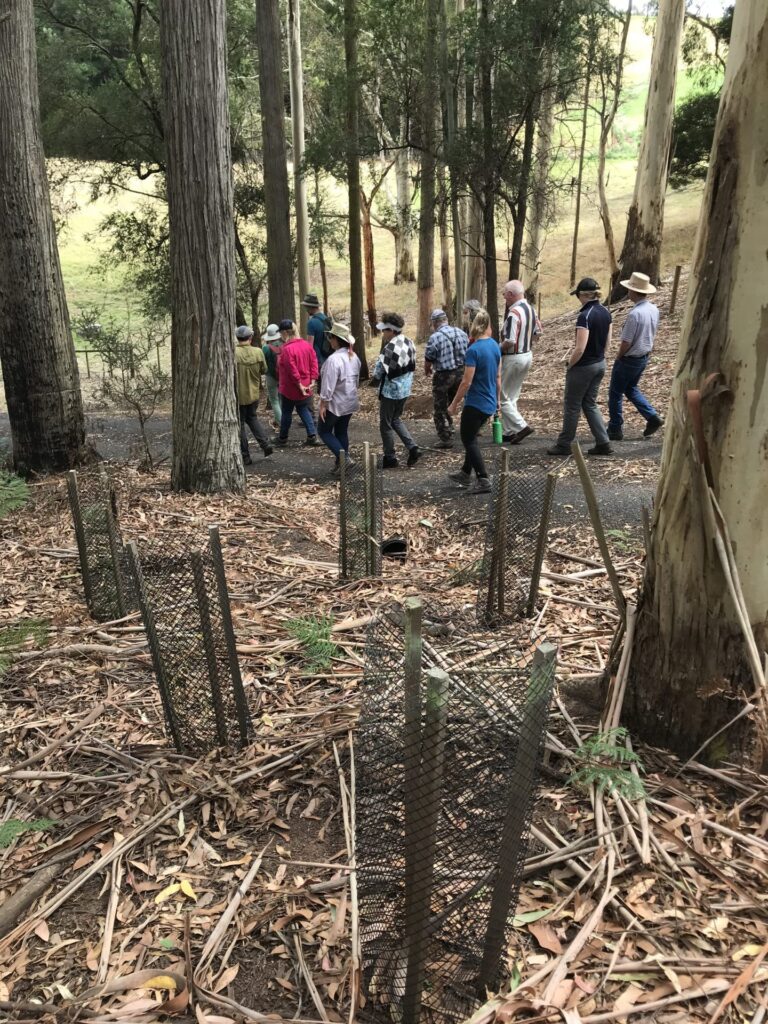
With all the wet and dry sclerophyll forest and rainforest gullies that were already on the block, they probably didn’t really need to plant many plants (certainly Matt wondered where he was going to fit them in, each time Habitat supplied the 2000 plants that Rob had ordered the year before!). However, Rob and Brenda wanted to replace the broom with a variety of local native understorey plants and to supplement the rainforest species that they felt had been reduced by past logging and other activities; to speed up the natural succession and to have more of their favourite plants. They also planted grasses, sedges and sheoaks in an old logging landing, with the aim of attracting more beautiful firetails. There is heavy browsing pressure from the wallaby population, so each plant is guarded and staked, and some areas have been fenced to allow natural regeneration (which is vigorous when protected) from the soil seedbank.
Planting on the property has been a huge success, with about 95% of plants surviving, and this is because they know that “Planting the plants is just the start!”. Rob and Brenda do the maintenance, including watering plants in dry years, straightening guards, weeding within the guards and fixing broken stakes. So far, they’ve only removed one guard; they found the tree the next day, pulled completely over by wallabies, so they’ve left all other guards in place. At some stage, perhaps in a good season, they’ll try removing some more guards and hope the plants can cope with browsing. Herbert says that it seems some plants can become resistant to browsing, presumably by responding with an increase of leaf chemicals that deter the wallabies, as he sees fresh growth browsed but secondary growth left alone.
When they are having doubts, Rob and Brenda wonder if they shouldn’t have spent their money and time elsewhere, or tried different techniques for regeneration (e.g. burning, fencing), but the consensus of those at the field day was admiration for their efforts, joy to know that such a large area has been saved from weeds, and support for their aims to increase the proportion of less common species.
It was a pleasure and inspiration for all of us to visit this lovely property. Like the Tasmanian Land Conservancy, Conservation Landholders Tasmania provides opportunities for landholders to learn more about nature and gain practical skills, and to share their own experiences in diversely interesting conversations during the day, and we are delighted to play a small part in supporting the excellent work of this bunch of community volunteers.
